Our digitisation team in Wellington have recently completed a project digitising a large collection of Glass Plate Negatives for Whanganui Collegiate School Museum and Archives.
Glass Plate Negatives
Glass Plate Negatives predate sheet and roll film, and during the height of their use were almost exclusively used on large cameras with tripods. Glass plates, usually in sizes 8×10” (large format) or 4×5” (medium format) were used as the substrate for the light-sensitive photographic emulsion. They provided extremely good quality images when exposed correctly and could be enlarged significantly more than many digital images (even today) without losing information in the image.
The Collection
This collection of Glass Plate Negatives span 41 years of events in Whanganui Collegiate School’s history from 1881 to 1922. The collection was stored at Whanganui Regional Museum and was beautifully cleaned and prepared for us prior to digitisation. The plates were each packed with archival paper, cut to size to form an envelope. These envelopes were labelled with accession numbers and keywords, then packed tightly in boxes lined with foam to avoid the glass moving around and decrease the risk of breakages.
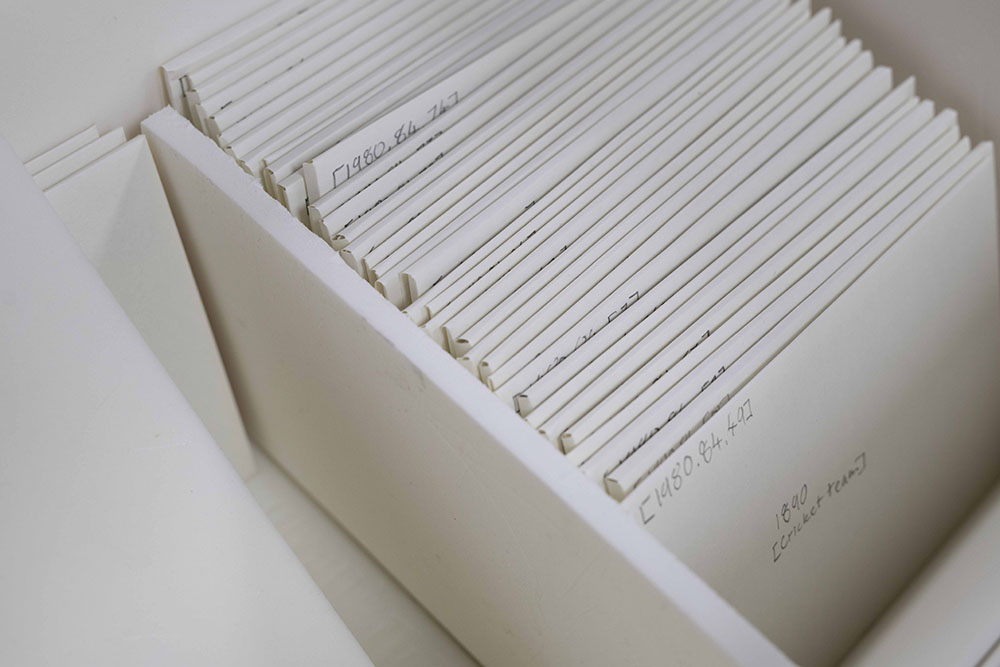
“Martin and Sheryl first visited our Museum last year and this gave them an insight as to what we had and wanted to achieve. From that first contact we have found “Team Micrographics” wonderful to work with, their advice and expertise has been invaluable and resulted in our Museum now having our collection of glass plate photos in a format that can be easily viewed and shared online.”
Richard Bourne, Chairman WCS Museum Trust
The Process
Before we started scanning we carefully considered the workflow process of this project while ensuring that we were able to follow the appropriate handling requirements.
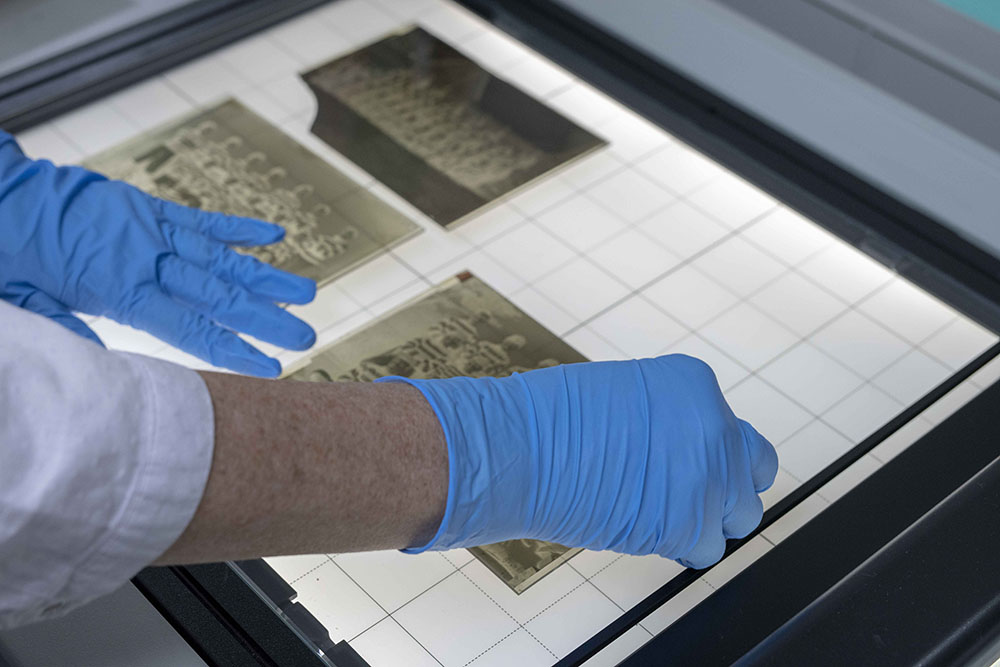
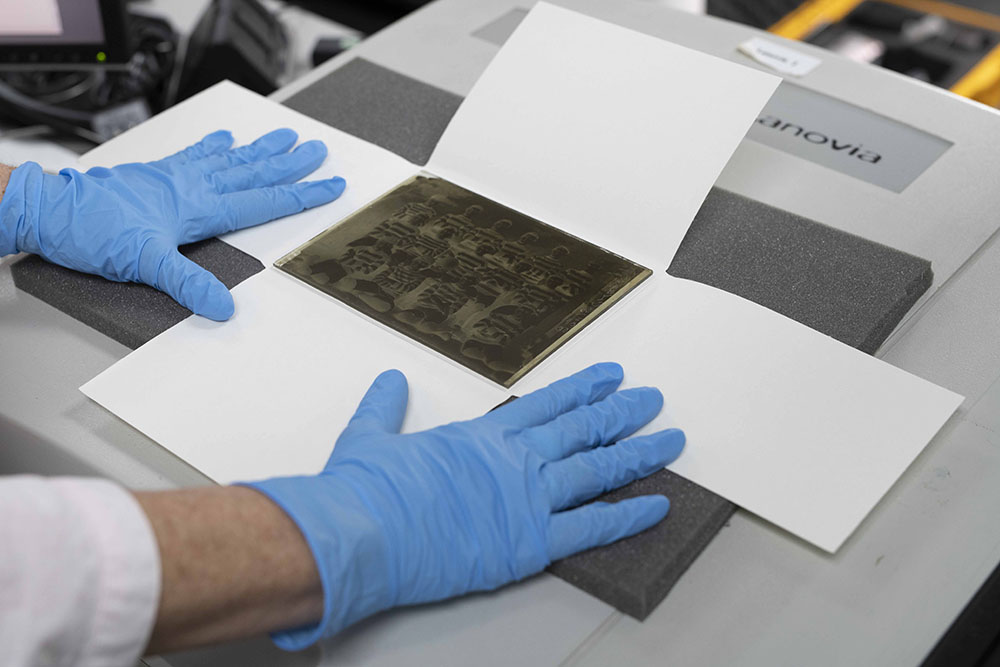
The process was as follows:
- Clean and tidy digitisation workplace area
- Wear nitrile gloves (cotton gloves won’t give enough grip)
- Place box of negatives onto the scanning desk
- Ensure foam is in place on desk to unwrap and layout plates
- Unwrap enough plates to fill the scanner bed (2 for 8×10”; 4 for 4×5”)
- Unwrap plates one at a time, placing on the scanner bed after removing any dust with a blower brush.
- Fold the envelopes back up and lay them out to mirror the layout of the scanner bed to ensure plates are named correctly and return to the right envelopes.
- Process a ‘preview’ on the scanner.
- Name the scans and proceed, scanning 16bit Tiffs.
- After scanning, remove plates one at a time, returning them to their envelopes.
- Carefully place digitised plates into a separate box.
- Once the whole box is scanned, return plates to their original box.
- Perform post-capture processing such as levels adjustments, colour management, cropping and quality control.
- Create access files required.
The Condition
The overall condition of this collection was excellent, especially considering the nature and age of the plates. However, as to be expected, there were a few notable cases of pre-existing damage that illustrate some of the risks attributed to glass plates.
This is an extreme case of delamination of the emulsion (where the image itself separates from the glass):
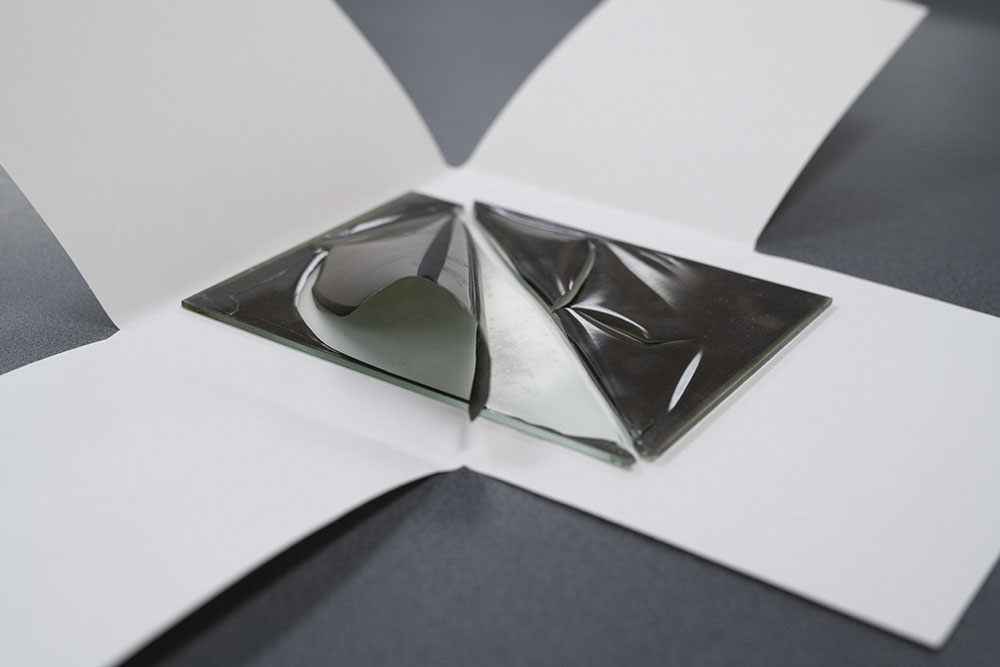
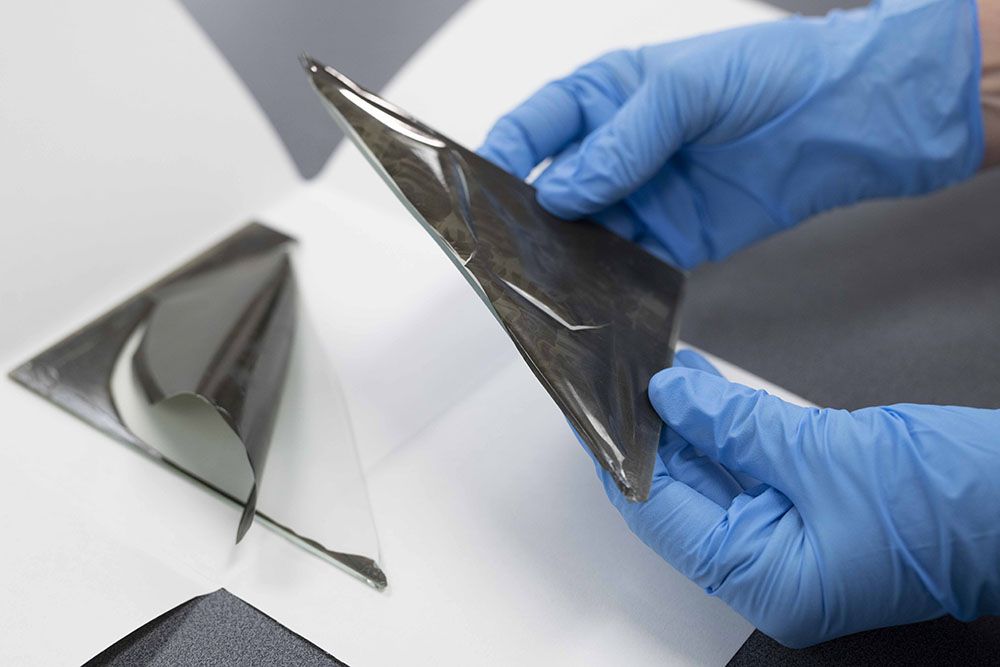
Glass Plate Negatives are also at risk of cracks, scratches and chips:
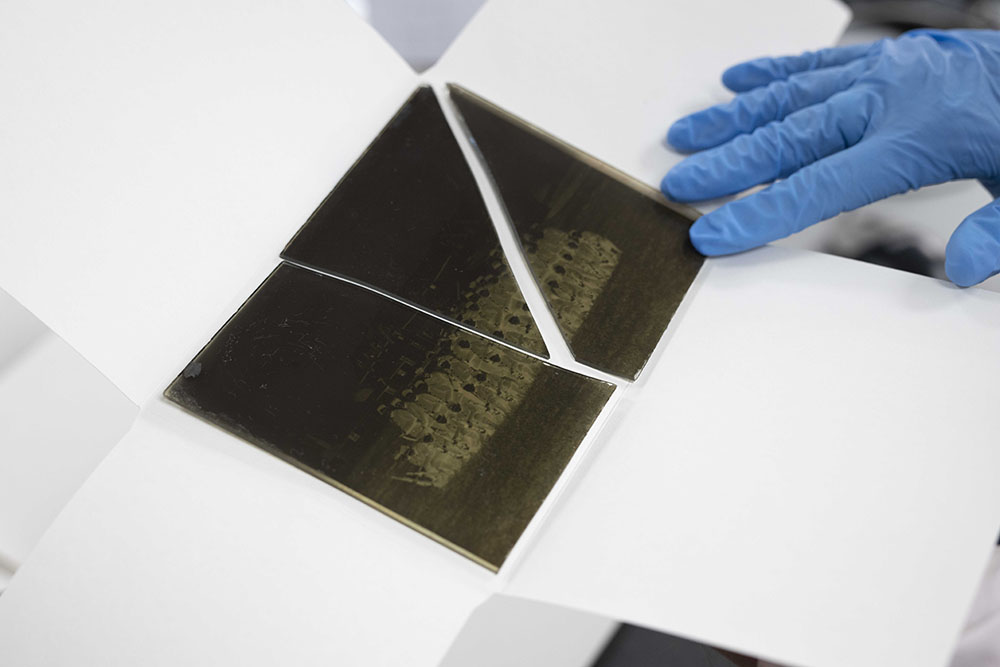
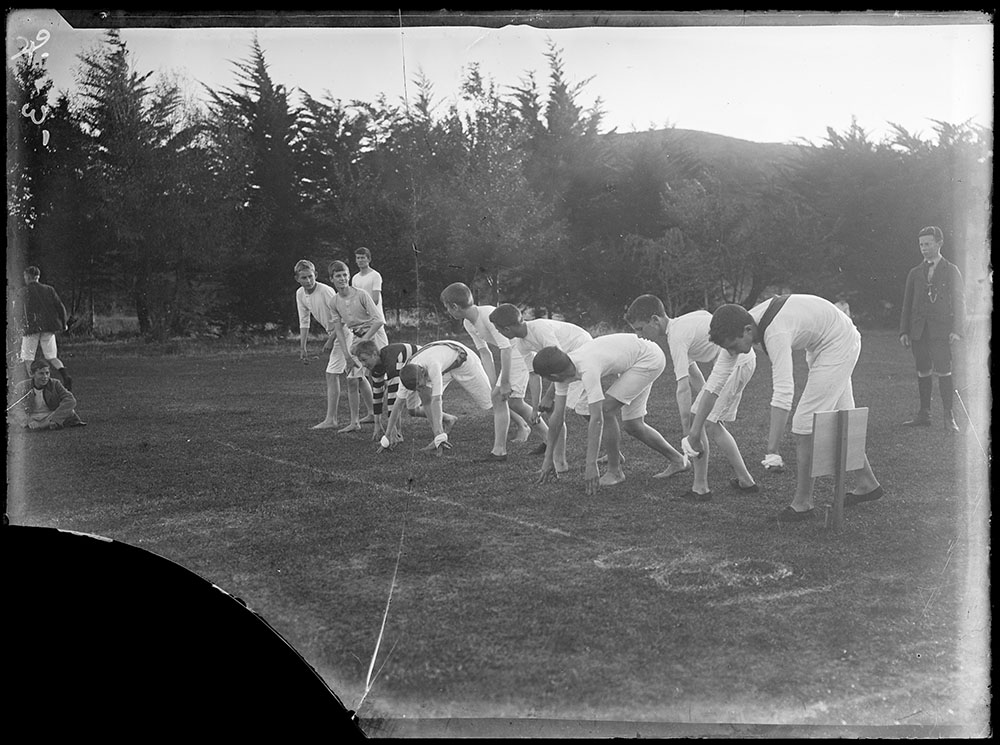
‘Silvering’ can occur as a chemical reaction in which the silver compounds in the emulsion become silver metals. In this case, the silvering is quite advanced and has produced a marble-like discolouration of the image:
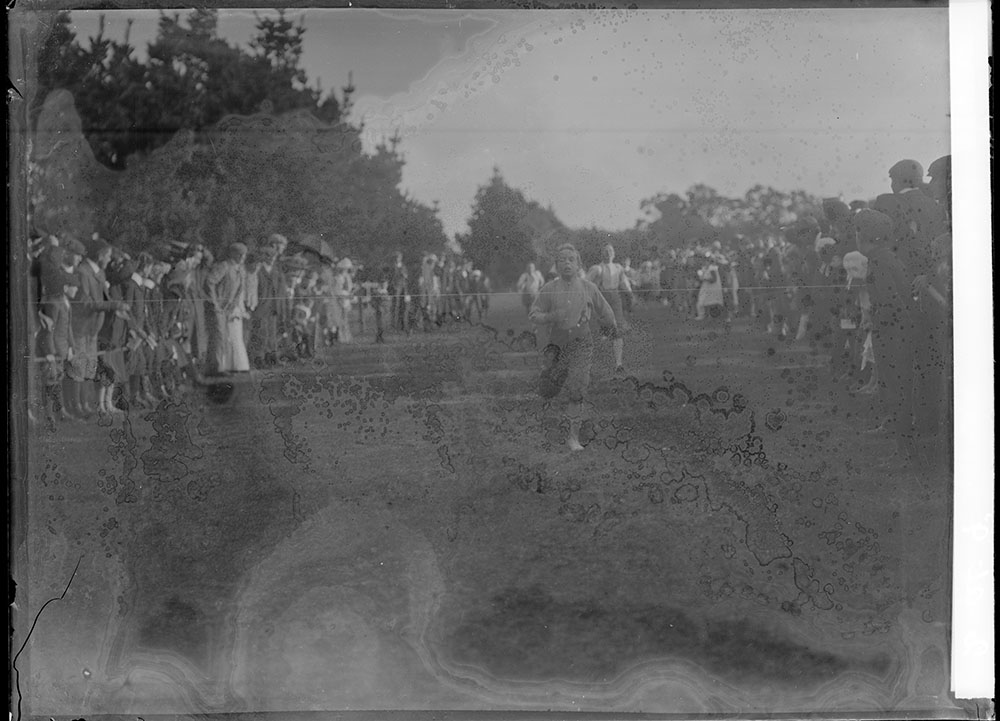
We found the group portrait below which looks like it was used to print a head-shot of the man masked out. Due to the fragility of the emulsion, it would have been far too risky to even consider removing this mask, resulting in the image behind the mask irretrievable:
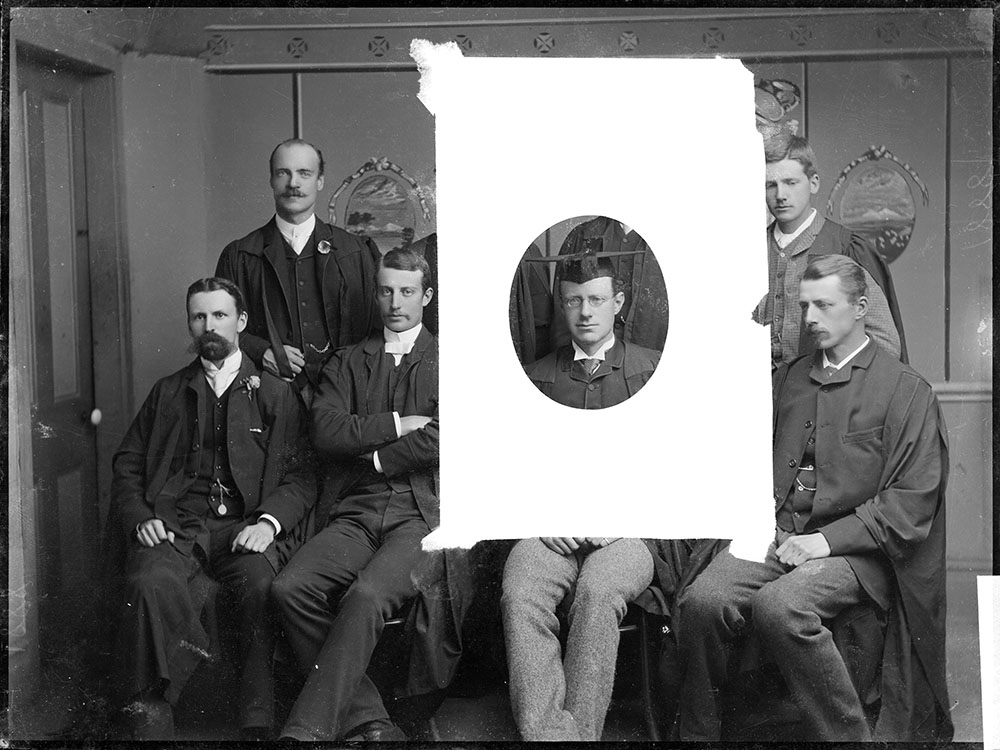
The length of exposure required for photography of this period is noticeable in the boy who is circled. Long exposures meant people would struggle to stay still enough to not appear blurred. This plate is from 1895.
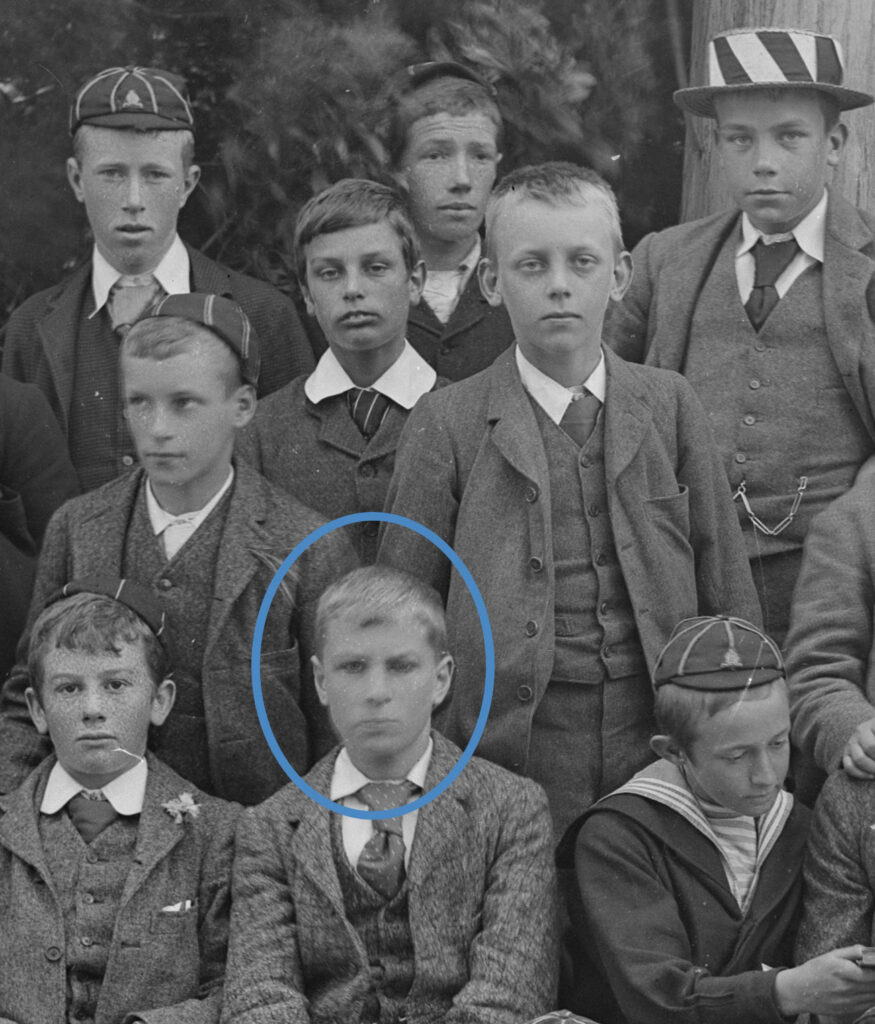
This collection is yet another example of the importance of digitisation for aging photographic collections. The older the photograph materials, especially those produced by analogue chemical processes, the greater the risk of losing the information contained in them. As displayed, even with the best of care, it is nearly impossible to mitigate all risks pertaining to the condition of photographic materials. It is therefore crucial that archival photographic material is assessed and digitised as soon as practicable not only to preserve the images and their subjects, but also to make them safely accessible to the public.
These Glass Plate Negatives will be available to view online through the NZ Museums site here.
If you have a similar collection and are unsure of the chemical stability, see our Acetate Film Degradation Resource. For handling and storage advice for your photographs see our Handling, Storage and Packaging of Cultural Heritage Material Resource, or contact us for a consultation about the condition of your collection.
